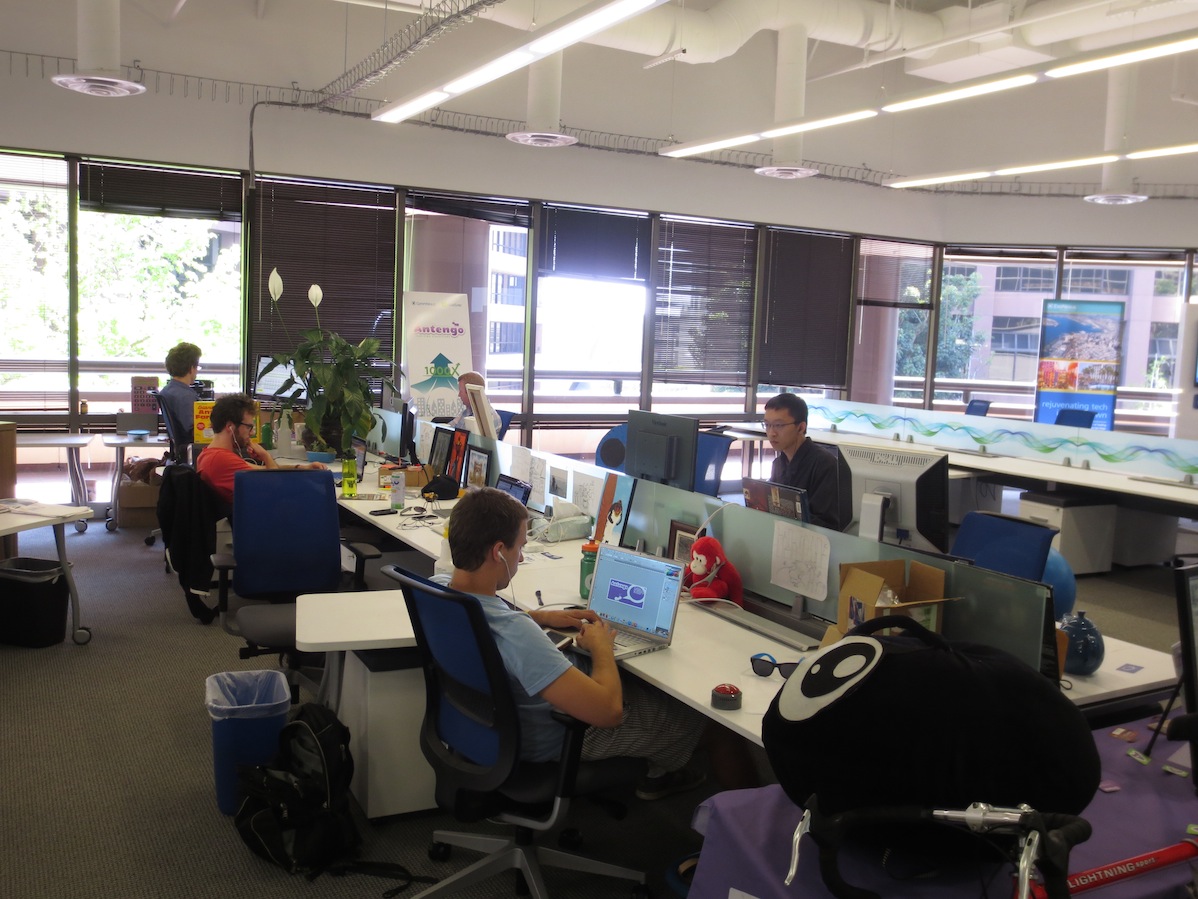Daily Business Report: Monday, Aug. 16, 2021
$1.8 billion aerospace industry taking off in North County
City of Carlsbad-City of Oceanside-County of San Diego-City of San Marcos- City of Vista
From Mars missions to new aviation technology, North County’s aerospace industry has built strong connections between companies, military and scientific initiatives.
The industry drives technological innovation, high wage employment and international (and universal) connectivity. North County’s aerospace cluster generates 13,800 total jobs and has an annual economic impact of $1.8 billion in San Diego County, taking into account direct, indirect, and induced effects. (EMSI).
With deep military roots, expertise in advanced manufacturing and a supportive entrepreneurial ecosystem, the region is a hotbed for aerospace innovation. The proof is also in the location: Close proximity to Cali Baja, matched by North County’s year-round temperate weather, makes it possible for firms to conduct frequent testing, nearshore manufacturing and access specialized talent and suppliers—all critical elements to streamlined development and commercialization.
Some of North County’s aerospace stars:
• Viasat, the global communications company
• Carbon by Design specializes in a suite of aerospace services
• Vulcan Wireless provides digital communications for terrestrial and space applications
PHOTO: Viasat satellite rendering. (Courtesy of Viasat)
Planck Aerosystems and Marine Advanced
Robotics enter strategic alliance
San Diego-based Planck Aerosystems and Marine Advanced Robotics have established a strategic alliance to provide a multi-domain robotic team that includes an unmanned surface vessel (USV) equipped with a small unmanned aircraft system that operate together for advanced mission profiles.
The first system of its kind, the UAS-USV combination has broad applicability in the maritime sector. Applications include offshore infrastructure inspection (such as wind turbines and oil platforms), patrols of marine protected areas and exclusive economic zones (EEZs), and defence and security use cases. The sUAS can be operated remotely as a push-button capability, which includes autonomous launch and recovery, as well as automatic securing and recharging while not in flight.
The combined system is currently in trials for early customers. It will be offered as an enabling capability to all customers in the fourth quarter of 2021.
Legislation clears way for San Diego
to invest $293 million in infrastructure projects
sdnews.com
Legislation that clears the way for the City of San Diego to invest roughly $293 million to repair or upgrade roads, stormwater systems, parks, recreation facilities, and libraries, as well as purchase much-needed public safety and waste management equipment, has been signed by Mayor Todd Gloria.
Gloria signed the legislation in a ceremony at Mesa Verde Park, which sits on the north side of Gold Coast Drive, a badly crumbling thoroughfare in Mira Mesa that the community has been trying to get reconstructed for years. The new funding will include $11 million to reconstruct portions of Gold Coast Drive and nearby Parkdale Avenue.
The funding breaks down into these categories:
Public safety: $97.7 million
Mobility and transportation: $59.4 million
Environmental services: $50.4 million
Stormwater: $49.6 million
Parks and recreation: $20.7 million
City facilities: $14.7 million
Information technology: $550,000
General Atomics secures prime positions on
General Services Administration’s prime contract list
General Atomics Aeronautical Systems Inc. (GA-ASI), the San Diego manufacturer of Remotely Piloted Aircraft (RPA) systems, secured nine prime positions on the new General Services Administration (GSA) contract system geared for the needs of the Department of Defense and the U.S. military.
The contract system’s scope includes operations, maintenance, readiness, development, research and development, hardware, and systems integration of manned, unmanned, and optionally manned systems, robotics, and platforms, as well as the services that support those systems, robotics, and platforms within the intelligence, surveillance, and reconnaissance mission (ISR) area.
General Atomics secured prime positions in nine of the 10 available pools: Data Operations; Mission Operations; Aviation; Space; Maritime; Development and Systems Integration; Research and Development; Support; and Training.
Northrop Grumman awarded five-year NATO contract
Northrop Grumman has been awarded a five-year, multimillion-dollar contract from the NATO Support and Procurement Agency in support of the NATO Alliance Ground Surveillance Force. Under this contract, the San Diego company will provide program management, software sustainment, configuration management, and technical support to NATO’s fleet of unmanned aerial vehicles.
The Cake House in Vista granted
recreational cannabis license
The Cake House Vista was granted their recreational cannabis license on Friday to sell to any customer aged 21 and older. All new customers receive 30 percent off their first purchase. Honoring those who have served in the military, all veterans receive 20 percent discount, and all Seniors 65 and older receive a 10 percent discount.
“North San Diego County has the highest veteran population per capita in the United States. There are thousands of veterans that will now have access to lab tested cannabis through Vista’s newly passed recreational cannabis laws,“ company CEO Daniel Wise said. “These veterans no longer have the barrier of entry or fear of VA benefit reprisal that they have historically faced with outdated medical policies.”
Salk researchers identify neurons
involved in overdose deaths
It’s long been known that opioid overdose deaths are caused by disrupted breathing, but the actual mechanism by which these drugs suppress respiration was not understood. Now, a new study by Salk scientists has identified a group of neurons in the brainstem that plays a key role in this process.
The findings, published June 8 in the journal Proceedings of the National Academy of Sciences, show how triggering specific receptors in these neurons causes opioid-induced respiratory depression, or OIRD, the disrupted breathing that causes overdose deaths. It also shows how blocking these receptors can cause OIRD to be reversed.
The U.S. saw more than 93,000 overdose deaths in 2020, of which an estimated 60 percent were attributed to opioids like fentanyl.
International Collaborative course
takes inspiration from the streets
The distinctive street art of urban Brazil, which turns city walls and pavements into striking canvases of social expression, is among the sources of study for a new collaborative course for students at San Diego State University and in Bogotá, Colombia.
Students from SDSU and Universidad Católica de Colombia (UCC) will exchange ideas through shared coursework and group projects in the Collaborative Online International Learning (COIL) course, a popular form of global, cross-cultural learning that doesn’t require travel abroad.
Artistic Interventions in South American Streets (BRAZ 496 and ANTHRO 529), is new for fall 2021 at SDSU and will be taught by Kristal Bivona, assistant director and lecturer in the Behner Stiefel Center for Brazilian Studies.
Lab-grown stem cells
bode well for transplants, aging research
Hematopoietic stem cells — the precursors to blood cells — have been notoriously difficult to grow in a dish, a critical tool in basic research. Scientists at University of California San Diego School of Medicine have identified the underlying issue and developed a method to keep cultured cells healthy. These findings, they say, are positive news for patients seeking stem cell transplants — and may hint at a new way to ward off aging.
The findings published in the Aug. 12, 2021 online issue of Cell Stem Cell.
Discovery highlights role of brain cholesterol in Alzheimer’s
A team co-led by scientists at Scripps Research has used advanced imaging methods to reveal how the production of the Alzheimer’s-associated protein amyloid beta in the brain is tightly regulated by cholesterol.
Appearing on line Thursday ahead of print in the Aug. 17 issue of the Proceedings of the National Academy of Sciences, the scientists’ work advances understanding of how Alzheimer’s disease develops and underscores the long-underappreciated role of brain cholesterol. The findings also help explain why genetic studies link Alzheimer’s risk to a cholesterol-transporting protein called apolipoprotein E.




